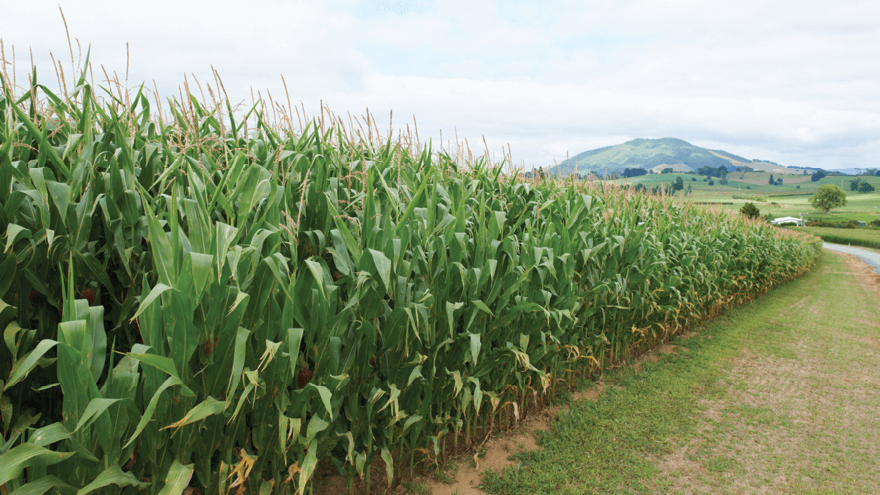
The effects of soil fertility on growing maize
Maize silage and grain are potentially high yielding crops that play an important role within New Zealand’s pastoral systems. Their potential yield will be affected by the physical and chemical fertility of the soil. Below are some issues to consider when planning and growing a crop of maize.
Not all paddocks are suitable for maize production so paddock selection is the most important criteria determining the yield potential. Paddocks with low yield potential are those with temperature or moisture limitations, poor drainage, low organic matter (paddocks that have been continually cropped) and soil compaction issues.
Maize is particularly sensitive to soil compaction so good soil structure is needed to ensure root development and elongation is not compromised. A compacted soil can be identified by digging a hole and examining the soil structure. If you detect compaction, you may need to consider sub-soiling or ripping prior to cultivation to break up the compacted layer. This will improve water movement and root penetration through the profile.
If one or more of these limitations are present in your selected paddock, then be realistic when estimating the expected yield. Identify suitable paddocks as early as possible. This allows time to adjust pH and fertility which may not be easily remedied closer to planting.
Once you have selected an appropriate paddock, complete a soil test to a depth of 15 cm. A small investment in a soil test pays dividends later as it allows your
PGG Wrightson Technical Field Representative to recommend the correct amount of fertiliser to grow the current crop and ensure soil fertility is maintained at optimum levels for following crops.
Maize requires large amounts of Nitrogen (N) and Potassium (K) with these nutrients usually applied in the greatest quantities. Phosphorus (P), Sulphur (S) and Magnesium (Mg) are needed in much smaller quantities. However, P is vitally important in early root development. An optimum pH for pasture is usually adequate for maize.
When formulating a fertiliser plan consider what is going to follow a maize crop and make sure your fertiliser(s) not only feeds the current crop but also leaves soil chemical fertility at an optimum level for the following crop.
N is the largest input in a maize fertiliser programme. It is common practice to apply a smaller portion of N at sowing usually combined with P starter fertiliser, with the balance applied as a side dressing when the plant is at growth stage V4 to V6 (typically four to six weeks post-emergence).
If soil tests show below optimum P levels then these need to be increased. P is best added to the seed bed prior to planting as a base fertiliser. Regardless of whether P levels are below or above optimum level, P in the form of a starter fertiliser should always be placed near the seed but not touching the seed, to help promote early root growth.
Silage and grain crops require different K fertiliser applications. As the residues from grain crops are left in the paddock, they return more K back to the soil than silage, so grain crops have a lower K requirement than silage. Maize is unlikely to respond to K fertiliser unless soil K test levels are low. However, this does not mean K fertiliser is not required. You still need to apply to replace crop removals. A smaller portion of the required K can be applied with the base fertiliser and the balance should be applied post-harvest to avoid luxury uptake by the maize crop which may affect K levels in the soil.
For more information on growing maize, contact your local PGG Wrightson Technical Field Representative.



